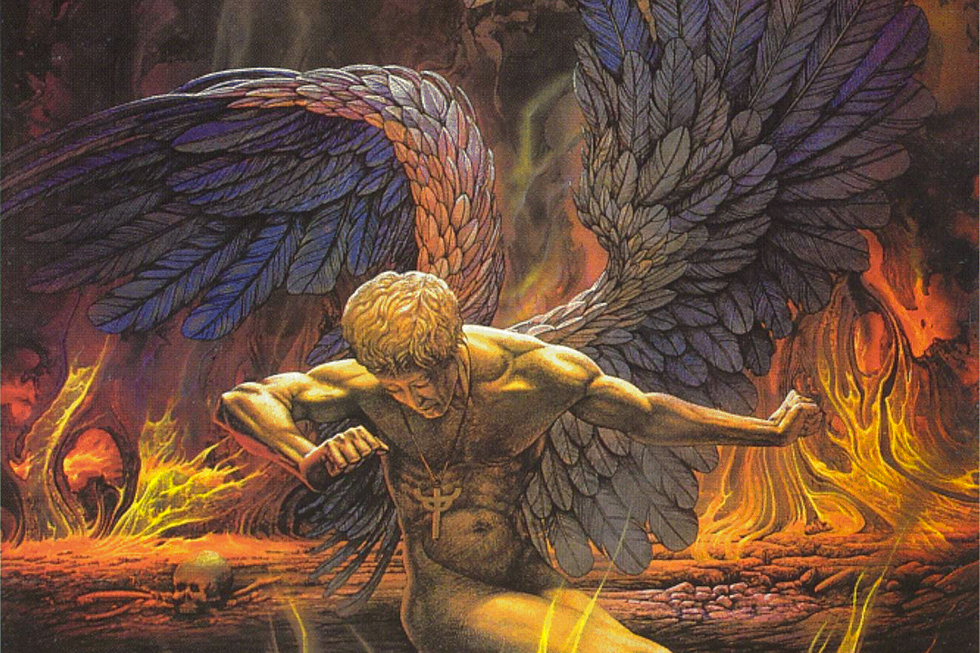
How Judas Priest Came Into Their Own With ‘Sad Wings of Destiny’
Heavy metal may have first roared into existence circa 1970, thanks to the pioneering work of Black Sabbath, Deep Purple, Led Zeppelin and countless other luminaries, but it was Judas Priest who ushered in the second wave of metal bands with their second album, Sad Wings of Destiny, which was released on March 23, 1976.
Before then, the Birmingham natives had managed to cause only a moderate commercial and critical ruckus with their 1974 debut, Rocka Rolla, which saw them locking horns with producer Rodger Bain over everything from the recording conditions to his final mix and even the song selection. The album was inconsistent in quality and style, often meandering into art rock; more troubling still, a handful of newer, stronger compositions were rejected by Bain.
Those songs were eventually granted a little more time to be developed over the next several months, and they ultimately served as the backbone of Sad Wings of Destiny, the album that witnessed Judas Priest coming into their own as recording artists and leaders of the next generation of metal messiahs.
Among the more notable first-album rejects was Sad Wings’ iconic opener, “Victim of Changes,” which had evolved from an early concert favorite named “Whiskey Woman” before its prog-like eclecticism was honed to a razor-sharp point by the newly minted songwriting team of singer Rob Halford and guitarists Glenn Tipton and K.K. Downing (former singer Al Atkins was also credited for his contributions to the song).
It was Tipton's innate talent for crafting songs, and then arranging them, that deserve much credit for catalyzing Judas Priest’s great leap forward on Sad Wings of Destiny (he was virtually absent from Rocka Rolla in this regard, since he had only just joined the group). Specifically, the infectious and provocatively named riff-rockers “Deceiver, “Tyrant," “Genocide” and “Island of Domination,” as well as the classic “The Ripper,” where Halford’s inimitable banshee scream proved essential.
Two remaining tracks on Judas Priest's doomiest album offered dynamic contrast without losing focus on the task at hand: the gentle “Dreamer Deceiver” and the odd, Queen-like “Epitaph,” which sounds almost like a piano-driven lounge number.
When discussing Sad Wings of Destiny with OC Weekly in 2015, Halford said that it was still his personal favorite Judas Priest LP. “I really love that album," he noted. "It's an important album for us as a band and for heavy-metal music in general. It's just a very solid and representation of a lot of the best of Priest: the riffs, the tempo, the songwriting and vocals. It still stands the test of time.”
Downing, who left the band in 2011, later celebrated the album’s 40th anniversary by highlighting its fantasy cover image Painted by artist Patrick Woodroffe (who's worked with Greenslade, Strawbs, Budgie and others), it depicts a sullen angel tellingly sporting the band’s future emblem, known as the “Devil’s Tuning Fork,” around his neck.
Sad Wings of Destiny was a game-changing release from Judas Priest, even though its sales were somewhat disappointing, mostly the result of bad timing and punk rock’s rise to dominance. A growing legion of metal fans took notice and did their part to help grow the fledgling group’s following by word of mouth. Before long, a major label (CBS Records) signed the group to a new and improved recording deal ahead of the next year’s Sin After Sin.
Judas Priest’s career would only grow from here. Sad Wings of Destiny set them on their course toward greatness.
Top 50 Classic Heavy Metal Albums
Why Building Judas Priest's Set Lists Can Be 'Frustrating'
More From Ultimate Classic Rock









